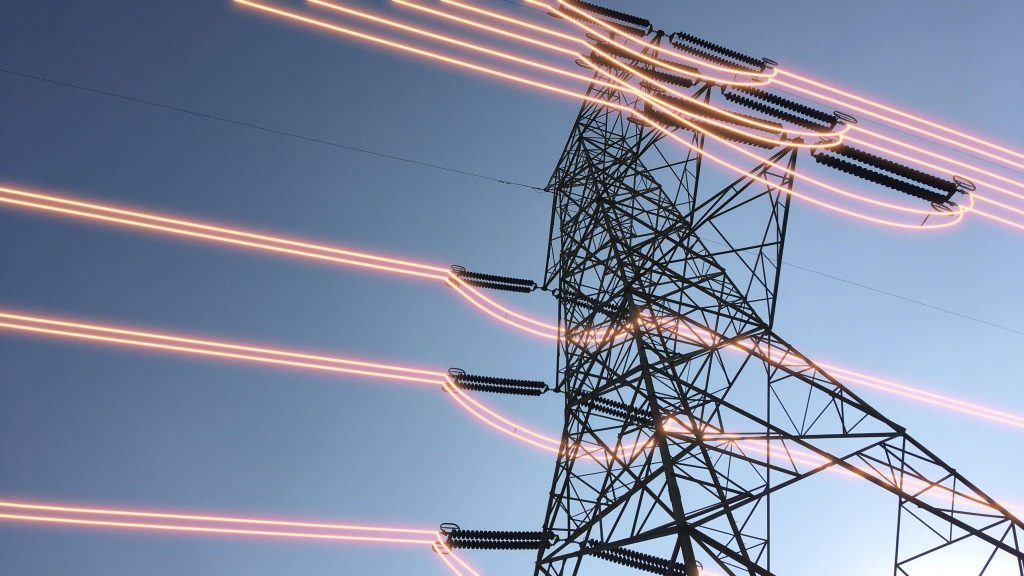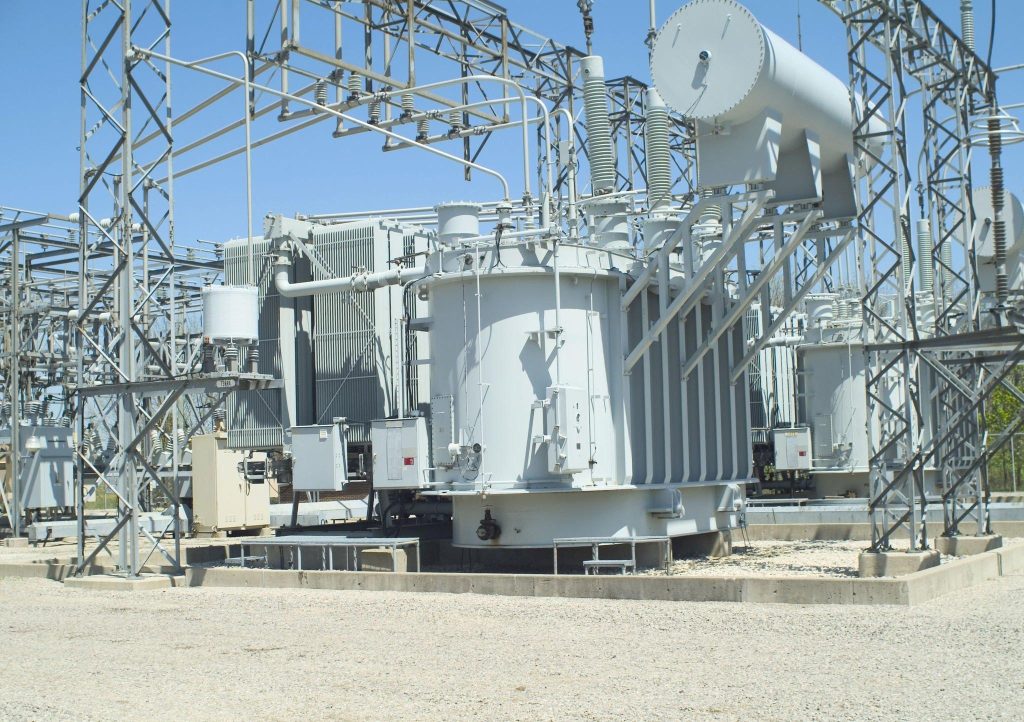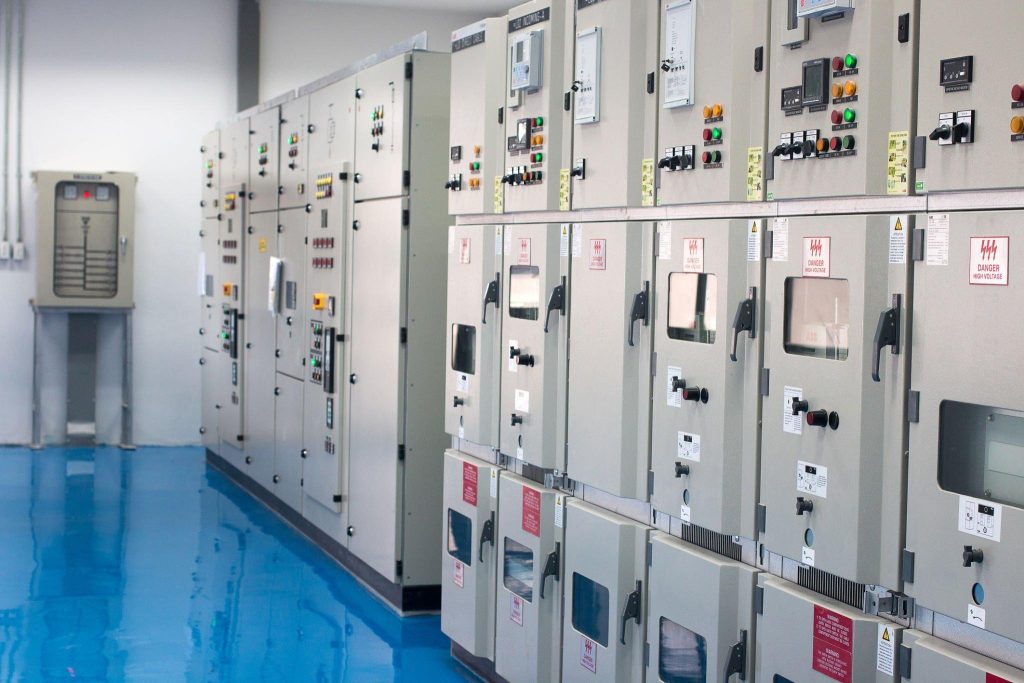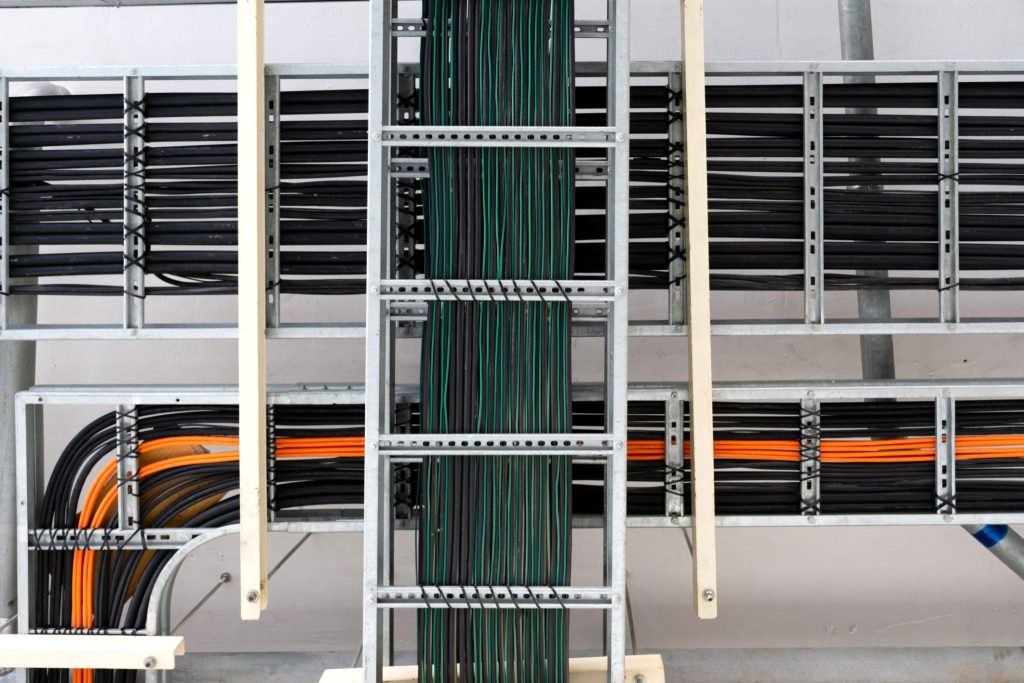Streamline Your Electrical Projects with Expert Single Line Diagram (SLD) Service

Welcome to Elion Technologies and Consulting Private Limited, your trusted partner in the electrical industry since 2010. With a decade of experience under our belt, we specialize in providing top-notch Single Line Diagram (SLD) services that are designed to streamline your projects and ensure their success.
At Elion Technologies, we pride ourselves on staying at the forefront of technology. Our expert team utilizes the latest software tools to conduct in-depth studies and create accurate and comprehensive SLDs that serve as the backbone of your electrical systems. We understand the critical role that SLDs play in project planning, design, and implementation, and we are committed to delivering solutions that exceed your expectations. Quality and precision are at the core of our values. This commitment to excellence ensures that our SLDs are not only compliant with industry standards but also tailored to your specific needs.
Whether you’re embarking on a new project, seeking to optimize an existing system, or ensure compliance with regulations, Elion Technologies is your partner of choice. Join the ranks of satisfied clients who have benefited from our expertise and let us empower your electrical projects for success.
Request a Custom SLD Consultation
Key Benefits
1. Decades of Expertise: With over a decade of dedicated service in the electrical industry, Elion Technologies brings a wealth of knowledge and experience to every project.
2. Cutting-Edge Software: We harness the power of the latest software tools to perform detailed analyses and create SLDs that are accurate, efficient, and tailored to your specific requirements.
3. Comprehensive Solutions: Our SLD services go beyond the basics. We provide comprehensive solutions that cover every aspect of your electrical systems, ensuring a holistic approach to project planning and execution.
4. Regulatory Compliance: We understand the importance of adhering to industry standards and regulations. Our SLDs are designed to help you meet compliance requirements seamlessly.

5. Customization for Your Needs: Every project is unique. We take the time to understand your specific needs and tailor our services to provide SLDs that align perfectly with your objectives.
6. Optimized Efficiency: Our SLDs act as blueprints for efficient system design and implementation, helping you reduce downtime, minimize errors, and maximize overall efficiency.
7. Project Success Partner: We don’t just provide services; we become your partner in project success. Count on us to provide ongoing support and expertise throughout your project’s lifecycle.
8. Enhanced Decision-Making: Our detailed SLDs empower you with valuable insights, enabling informed decision-making that leads to better outcomes for your electrical systems.
9. Proven Track Record: Join a growing list of satisfied clients who have witnessed the positive impact of Elion Technologies’ SLD services on their projects.
Get a Free SLD Assessment
Key Features

At Elion Technologies and Consulting Private Limited, we offer a wide range of SLD services designed to cater to your unique electrical project needs. With a decade of experience and a commitment to excellence, we are your go-to partner for precise, reliable, and innovative SLD solutions.
1. SLD Creation and Design: Our expert team employs cutting-edge software tools to craft detailed and accurate SLDs that serve as the foundation of your electrical systems. From conceptualization to implementation, we ensure that your SLDs are meticulously designed to reflect the intricacies of your project.
2. Project Planning and Analysis: We delve deep into project requirements, conducting thorough analyses to determine the optimal configuration of your electrical components. Our SLDs aid in efficient resource allocation, minimizing risks and enhancing project planning.
3. Regulatory Compliance and Documentation: Navigating through industry regulations and compliance standards can be complex. Our SLD services ensure that your systems align with relevant regulations, providing comprehensive documentation that simplifies audits and inspections.
4. System Optimization and Upgrades: Already have existing electrical systems in place? Our SLD experts can analyze your current setup and provide recommendations for enhancements, upgrades, and optimizations to increase efficiency and reduce operational costs.
5. Collaborative Approach: We believe in partnership. Our team collaborates closely with you to understand your project goals, challenges, and aspirations. This approach allows us to tailor our SLD services to meet your unique requirements effectively.
6. Ongoing Support and Consultation: Our commitment extends beyond project completion. We provide ongoing support and consultation, offering expert advice as your project evolves and guiding you through any SLD-related queries or challenges.
7. Transparent Communication: We prioritize clear and open communication. Throughout the project lifecycle, we keep you informed about progress, changes, and any potential adjustments required, ensuring a smooth and transparent collaboration.
Choose Elion Technologies for SLD services that combine industry-leading technology, meticulous precision, and a client-centric approach. Experience the difference that our comprehensive SLD solutions can make in elevating the efficiency, reliability, and success of your electrical projects.
Explore Our SLD Portfolio
Why choose us?
1. Expertise and Experience: With over a decade of dedicated service in the electrical industry, Elion Technologies brings a wealth of expertise and experience to every project. Our team of skilled professionals is well-versed in the intricacies of SLD creation and analysis.
2. Cutting-Edge Technology: We stay at the forefront of technology, utilizing the latest software tools to perform in-depth studies and create accurate SLDs. Our commitment to innovation ensures that your projects benefit from the most advanced solutions available.
3. Comprehensive Solutions: Our SLD services offer more than just diagrams. We provide comprehensive solutions that encompass project planning, compliance, optimization, and ongoing support, delivering a holistic approach that covers all aspects of your electrical systems.
4. Customization for Your Needs: We understand that each project is unique. Our team takes the time to understand your specific requirements, tailoring our SLD services to align perfectly with your objectives and challenges.

5. Regulatory Compliance Assurance: Navigating industry regulations can be complex. Our SLDs are designed to help you meet compliance requirements seamlessly, providing you with the documentation and insights needed to ensure regulatory adherence.
6. Partnership and Collaboration: We don’t just offer services; we forge partnerships. Our collaborative approach means that we work closely with you, incorporating your input and feedback to create SLDs that truly reflect your vision and goals.
7. Ongoing Support and Consultation: Our commitment extends beyond project completion. We provide continuous support and consultation, offering expert advice as your project evolves and addressing any SLD-related inquiries or challenges that may arise.
8. Proven Track Record: Join a growing list of satisfied clients who have witnessed the positive impact of Elion Technologies’ SLD services on their projects. Our track record speaks for itself, showcasing successful implementations across various industries.
9. Transparency and Communication: Clear communication is integral to our approach. We keep you informed at every stage of the project, ensuring transparency, and providing regular updates on progress, changes, and potential adjustments.
When you choose Elion Technologies, you’re choosing a partner dedicated to your project’s success. Experience the advantages of working with a team that combines expertise, innovation, and a client-centric mindset to deliver SLD solutions that elevate your electrical projects to new heights.
Schedule a Site Visit
Industry Experience

At Elion Technologies and Consulting Private Limited, our journey spanning over a decade in the electrical industry has equipped us with a profound understanding of various sectors and their unique requirements. Our industry experience encompasses a wide range of fields, allowing us to deliver tailored Single Line Diagram (SLD) solutions that address specific challenges and opportunities.
Our industry expertise includes, but is not limited to:
1. Commercial Enterprises: From office complexes to retail spaces, we have collaborated with commercial enterprises to design and optimize electrical systems that cater to their specific operational needs, energy efficiency goals, and regulatory compliance.
2. Industrial Facilities: The intricate demands of industrial environments require specialized electrical solutions. Our experience extends to industries such as manufacturing, warehousing, and production, where we have provided SLD services that ensure seamless operations and safety.
3. Residential Developments: We have contributed to the creation of efficient and reliable electrical systems for residential projects, ensuring the comfort and safety of occupants while adhering to local building codes and regulations.
4. Renewable Energy and Sustainability: Our expertise extends to the renewable energy sector, where we’ve assisted in designing SLDs for solar installations, wind farms, and other sustainable energy projects, helping clients harness clean and efficient power sources.
5. Infrastructure and Utilities: Collaborating with infrastructure and utility providers, we have developed SLDs that support critical operations such as water treatment plants, transportation systems, and public services, ensuring the uninterrupted flow of essential services.
6. Healthcare and Laboratories: Our experience in the healthcare sector involves creating SLDs for hospitals, clinics, and laboratories, where precision, safety, and compliance are paramount to delivering optimal patient care and research outcomes.
7. Data Centers and IT Facilities: The technology-driven landscape of data centers and IT facilities demands robust electrical systems. We have assisted in designing SLDs that support high-performance computing, data storage, and network infrastructure.
8. Educational Institutions: From schools to universities, we’ve contributed to the creation of reliable electrical networks that facilitate learning environments, research facilities, and campus operations.
Our extensive industry experience positions us as a trusted partner capable of understanding the nuances of various sectors and translating them into effective SLD solutions. When you choose Elion Technologies, you benefit from a wealth of practical knowledge that ensures the success of your electrical projects, regardless of the industry you operate in.
Start Your SLD Project Today
FAQs
An SLD is a simplified representation of an electrical system, showcasing the connections between components using single lines to depict power flow.
An SLD provides a clear overview of your electrical system, aiding in design, troubleshooting, and compliance with regulations.
We have been serving the electrical industry for over a decade, offering a wealth of expertise and knowledge.
We utilize cutting-edge software tools to design accurate and efficient SLDs, ensuring optimal system performance.
Our instruments undergo rigorous annual calibration through a NABL-accredited laboratory to ensure accuracy.
Absolutely, our SLDs are designed to help you meet industry standards and regulatory requirements seamlessly.
Yes, we have experience in designing SLDs for solar, wind, and other sustainable energy installations.
Our expertise spans various sectors including commercial, industrial, residential, healthcare, and more.
Absolutely, we tailor our SLD services to match your specific project requirements and objectives.
Yes, we provide continuous support and consultation to address any questions or challenges that arise.
You can request a personalized consultation by contacting us through our website or reaching out directly.
We offer a complimentary SLD assessment to evaluate your project’s needs and provide initial recommendations.
Certainly, we can analyze your current setup and suggest improvements to enhance efficiency and performance.
An SLD is a crucial tool for project planning, helping allocate resources and visualize the system layout.
The timeframe varies depending on project complexity, but we strive to deliver efficient results without compromising accuracy.
Yes, we provide timely assistance to address any urgent SLD-related concerns that may arise.
Absolutely, we have experience collaborating with clients globally to deliver successful SLD solutions.
Our unique combination of experience, cutting edge technology, compliance assurance, and client-centered approach distinguishes us.
Yes, we have a portfolio showcasing our successful SLD projects across various industries. Feel free to explore it on our website.
To start your SLD project, simply click on the ”Get Started” button on our website or reach out to our team directly to discuss your needs.
Single-Line Diagram (SLD) and Multi-Line Diagram (MLD) are graphical representations used in electrical engineering to depict the arrangement and connections of electrical components within a system. They are important tools for understanding and designing complex electrical systems.
- Single-Line Diagram (SLD): A Single-Line Diagram, often referred to as a one-line diagram, is a simplified representation of an electrical system using single lines to depict various components and their interconnections. It is commonly used in power distribution systems, industrial plants, and buildings to show the flow of electrical power from the source to various loads. Each component is represented by a standardized symbol, and lines indicate the connections between them.
The single-line diagram provides an overview of the system’s layout, including major components like generators, transformers, circuit breakers, switches, and loads. It is particularly useful for understanding the basic configuration of the system and identifying key components, but it does not provide detailed information about the physical layout or the connections between individual devices.
- Multi-Line Diagram (MLD): A Multi-Line Diagram, also known as a three-line diagram or ladder diagram, is a more detailed representation of an electrical system. It uses multiple lines to illustrate the connections between individual components and devices. MLDs are often used for control and protection circuits, motor control centers, and complex industrial processes.
In a multi-line diagram, each line represents a specific conductor or electrical path. Devices and components are drawn with more detail, showing their actual arrangement and connections. MLDs provide a clearer understanding of the control logic, sequencing, and interlocking of electrical components within a system. They are commonly used for designing and troubleshooting complex control systems.
In summary, while both single-line diagrams and multi-line diagrams serve to visually represent electrical systems, single-line diagrams offer a simplified overview of the system’s layout and interconnections, while multi-line diagrams provide more detailed information about the arrangement and connections of individual components and devices, particularly in control and protection systems.
Writing a single-line diagram involves creating a simplified graphical representation of an electrical system using standardized symbols and lines to depict the components and their interconnections. Here’s a step-by-step guide to help you create a basic single-line diagram:
Identify the Components: List all the major electrical components that you want to include in your diagram. This may include generators, transformers, circuit breakers, switches, loads, and other relevant devices.
Choose Symbols: Familiarize yourself with the standard symbols used for each type of component. Common symbols are available in electrical engineering standards such as ANSI (American National Standards Institute) or IEC (International Electrotechnical Commission).
Layout and Orientation: Decide on the layout and orientation of your diagram. Typically, the electrical source (such as a generator or utility supply) is placed at the top of the diagram, and the loads are placed below.
Draw Lines: Start drawing lines to represent the conductors connecting the components. Use straight lines to indicate connections between devices. Horizontal lines are often used for power distribution, while vertical lines may represent connections to loads.
Place Symbols: Place the symbols for each component on the appropriate line. Use accurate spacing and positioning to represent the physical arrangement of the components. Label each symbol with a reference designator (such as G1 for generator 1 or CB1 for circuit breaker 1).
Indicate Direction: Use arrows or other indicators to show the direction of power flow through the system. This is important for understanding the flow of electricity from the source to the loads.
Labeling and Annotations: Add labels, annotations, and notes to provide additional information. This can include voltage levels, current ratings, protective devices, and any relevant details.
Title and Legend: Include a title for your diagram and a legend that explains the symbols used in the diagram. This helps anyone reading the diagram to understand the meaning of each symbol.
Review and Finalize: Carefully review your diagram for accuracy, completeness, and clarity. Make sure all connections are correctly represented, and all necessary information is included.
Use Software Tools: Consider using specialized software tools for creating single-line diagrams, such as AutoCAD Electrical, EPLAN, or other electrical design software. These tools provide a range of symbols, templates, and features to help streamline the diagram creation process.
A “line diagram” can refer to different types of diagrams in various contexts. The term “line diagram” is a generic term that doesn’t specify a particular type of diagram but rather describes a diagram that uses lines to represent connections or relationships between elements. The specific type of line diagram depends on the field or subject being discussed. Here are a few examples:
Single-Line Diagram (SLD): In electrical engineering, a single-line diagram (SLD) is a type of line diagram that uses single lines and standardized symbols to represent the connections and components of an electrical system.
Multi-Line Diagram (MLD): Another term for multi-line diagram, which is used in electrical engineering to depict complex control and protection systems using multiple lines to represent individual conductors and detailed connections.
Process Flow Diagram (PFD): In chemical engineering and process industries, a process flow diagram is often referred to as a line diagram. It shows the major equipment and process flow paths using lines and symbols.
One-Line Diagram: This is another term used interchangeably with the single-line diagram in the context of electrical engineering.
Schematic Diagram: While not exactly the same, a schematic diagram often uses lines and symbols to represent components and their connections in various fields, such as electronics and engineering.
Single-Line Diagrams (SLDs) are widely used in electrical engineering to represent the connections and components of electrical systems. There are several different types of single-line diagrams, each with a specific focus and purpose. Here are some of the common types:
Power Distribution Single-Line Diagram: This type of SLD is used to depict the layout and connections of major components in a power distribution system, including generators, transformers, circuit breakers, switches, and loads. It provides an overview of how electrical power flows from the source to various loads within a facility.
Motor Control Single-Line Diagram: Motor control SLDs focus on illustrating the control circuitry for electric motors. They show the interconnections between motor starters, control devices, relays, and other components used to start, stop, and control motors.
Protection and Control Single-Line Diagram: These SLDs emphasize the protective devices and control systems within an electrical network. They highlight the relays, circuit breakers, fuses, and other protection equipment used to safeguard the system from faults and overloads.
Switchgear and Substation Single-Line Diagram: This type of SLD is specific to switchgear assemblies and substations. It shows the arrangement of various switchgear components, such as circuit breakers, disconnect switches, and protective relays, as well as the connections to transformers and other equipment.
Instrumentation and Control Single-Line Diagram: These SLDs focus on illustrating the control loops and instrumentation devices used in process control systems. They show how sensors, transmitters, controllers, and final control elements are interconnected to regulate and monitor industrial processes.
Renewable Energy Single-Line Diagram: With the increasing use of renewable energy sources like solar and wind, these SLDs depict how renewable energy systems are integrated into the overall electrical network, including inverters, battery storage, and grid connections.
Building Electrical Single-Line Diagram: This type of SLD is used in building services engineering to illustrate the electrical distribution and components within a building, including lighting, power outlets, panels, and distribution boards.
HVAC (Heating, Ventilation, and Air Conditioning) Single-Line Diagram: HVAC systems often have their own SLDs to show the electrical connections between HVAC equipment, controls, and the building’s electrical infrastructure.
Fire Alarm Single-Line Diagram: Fire alarm systems use SLDs to demonstrate the layout of fire detection devices, alarm panels, notification appliances, and their electrical connections.
Emergency Power Supply Single-Line Diagram: These SLDs depict the emergency power system, including generators, transfer switches, and connections to critical loads that need to be powered during outages.
A single-line diagram (SLD) is a simplified graphical representation of an electrical system or circuit using standardized symbols and lines to depict the arrangement and connections of its components. The components included in a single-line diagram can vary depending on the specific system being represented, but here are some of the common components you might find:
Generators: Represented by symbols indicating the type (synchronous, asynchronous, etc.) and capacity of the generators supplying power to the system.
Transformers: Shown with symbols indicating the transformer type (step-up, step-down, auto-transformer), voltage ratings, and connections.
Circuit Breakers: Represented by symbols indicating the type (air, oil, vacuum, SF6, etc.) and rating of circuit breakers used to protect and control the system.
Switches and Disconnects: Symbols for switches and disconnecting devices used for manual control and isolation.
Loads: Depicted using symbols to represent various types of loads such as motors, lights, heating elements, etc., along with their power ratings.
Busbars: Represented by lines or bars to indicate where different components are connected.
Protection Devices: Symbols for protective relays, fuses, and other devices used for overcurrent, undervoltage, and other forms of protection.
Control Devices: Symbols representing control relays, contactors, and other devices used for controlling the operation of the system.
Instrumentation: Symbols for instruments such as meters, gauges, and sensors used for measuring and monitoring parameters like voltage, current, and temperature.
Indicators and Annunciators: Symbols for indicating lights, alarm bells, and annunciator panels used for system status and alerts.
Grounding and Earthing: Symbols indicating grounding connections and grounding electrodes.
Transmission Lines and Cables: Lines representing the conductors used to carry electrical power between components.
Batteries and UPS: Symbols for battery banks and uninterruptible power supply (UPS) systems used for backup power.
Capacitors and Reactors: Symbols for capacitors and reactors used for power factor correction and voltage stabilization.
Distribution Panels: Symbols for distribution panels and subpanels where circuits are divided and routed to loads.
Connection Points: Indications of where components are connected to each other, often represented as junction points or connection nodes.
SLDs provide a clear overview of electrical systems, aiding in design, troubleshooting, and maintenance.
Outbound Link: Electrical System Design – Importance
Electrical engineers, technicians, facility managers, and anyone involved in electrical system design, operation, or maintenance should use SLDs.
Outbound Link: IEEE – Electrical Engineering
Objectives include documenting the electrical system, understanding system topology, and ensuring safety during maintenance and operation.
Outbound Link: Electrical System Documentation – Objectives
An SLD provides an overview with simplified symbols and represents the entire system in a single line, while detailed schematics offer in-depth information for specific components.
Outbound Link: Electrical Schematics – Comparison
An SLD should include equipment labels, ratings, connections, protective devices, and clear system boundaries.
Outbound Link: SLD Best Practices – Guidelines
